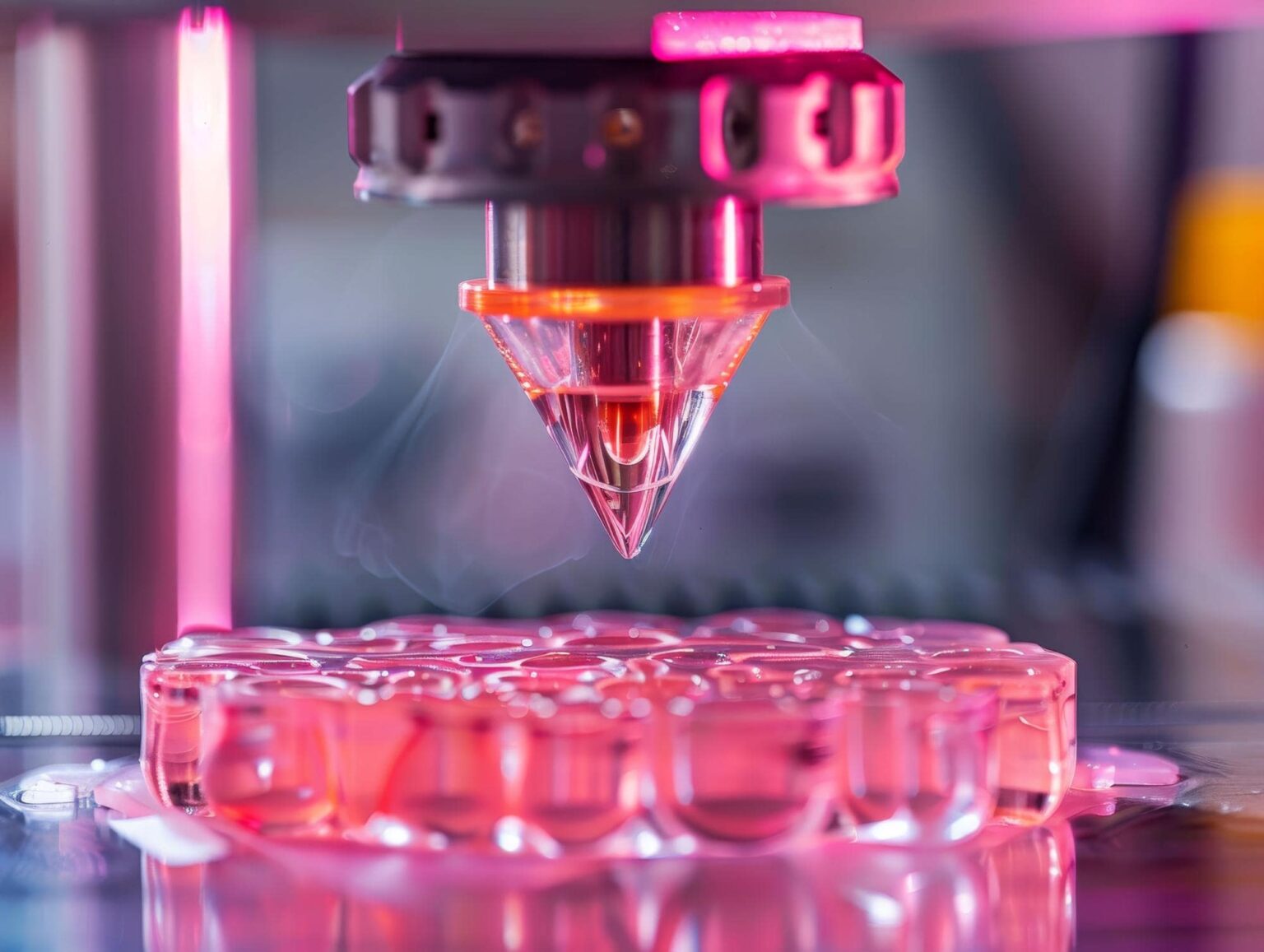Bioprinting is revolutionizing the fields of organ transplantation, tissue engineering, and personalized medicine by enabling the precise fabrication of biological constructs using 3D printing technology. Here’s how bioprinting is pioneering the future of healthcare:
Contents
Organ Transplantation:
- Organ Shortage Solution: Bioprinting offers a potential solution to the shortage of donor organs for transplantation by enabling the fabrication of functional tissues and organs using patients’ own cells. This reduces the risk of organ rejection and eliminates the need for immunosuppressive drugs.
- Customized Organ Constructs: Bioprinting allows for the creation of customized organ constructs tailored to individual patient anatomy, size, and physiological requirements. This personalized approach enhances transplant success rates and improves patient outcomes by minimizing complications and graft failure.
- Bioengineered Organs: Researchers are working on bioengineering complex organs such as kidneys, livers, hearts, and lungs using bioprinting techniques. By layering cells, biomaterials, and bioactive factors, bioprinting recreates the intricate architecture and functionality of native tissues, facilitating organ regeneration and transplantation.
Tissue Engineering:
- Regenerative Medicine: Bioprinting enables the fabrication of tissue-engineered constructs for regenerative medicine applications, including wound healing, bone regeneration, and cartilage repair. Bioinks containing cells, growth factors, and biomaterials are deposited layer by layer to create functional tissues with native-like properties.
- Complex Tissue Structures: Bioprinting technologies can create complex tissue structures with precise control over cell placement, density, and spatial organization. This allows for the recreation of vascular networks, nerve pathways, and multicellular architectures essential for tissue functionality and integration.
- Drug Testing Platforms: Bioprinted tissue models serve as in vitro drug testing platforms for evaluating drug efficacy, toxicity, and pharmacokinetics. Organ-on-a-chip devices and 3D tissue constructs mimic human physiology more accurately than traditional cell culture models, enabling more reliable preclinical drug screening and development.
Personalized Medicine:
- Patient-Specific Treatments: Bioprinting enables the creation of patient-specific tissue models and organoids for disease modeling, drug screening, and personalized therapy development. By using patient-derived cells, bioprinted models recapitulate disease phenotypes and predict individual responses to treatments.
- Precision Drug Delivery: Bioprinting allows for the fabrication of drug-eluting scaffolds and implantable devices for targeted drug delivery to specific tissues or organs. Precisely controlled release kinetics and spatial distribution of therapeutics improve drug efficacy, minimize side effects, and enhance patient compliance.
- Biomimetic Implants: Bioprinted implants and prosthetics mimic the natural structure and composition of native tissues, promoting tissue integration, host-cell infiltration, and functional regeneration. Biomimetic scaffolds support tissue remodeling and vascularization, facilitating long-term implant success and patient satisfaction.
Challenges and Future Directions:
- Bioink Development: Developing biocompatible, printable bioinks with suitable mechanical properties, cell viability, and bioactivity remains a challenge in bioprinting. Advances in biomaterial science, tissue engineering, and cell biology are needed to optimize bioink formulations for specific applications.
- Vascularization: Creating vascular networks within bioprinted tissues is essential for supporting nutrient transport, oxygenation, and waste removal. Overcoming challenges related to vascularization, perfusion, and angiogenesis is critical for scaling up bioprinted constructs for clinical transplantation.
- Functional Maturation: Bioprinted tissues often lack the functional maturity and complexity of native tissues, limiting their clinical translation. Enhancing tissue maturation, integration, and innervation through biochemical cues, mechanical stimulation, and coculture techniques is a focus of ongoing research.
- Regulatory Approval: Regulatory approval and clinical translation of bioprinted products require rigorous preclinical testing, safety assessments, and demonstration of therapeutic efficacy. Collaborative efforts among researchers, industry partners, and regulatory agencies are essential to navigate regulatory pathways and ensure patient safety.
- Clinical Translation: Transitioning bioprinting technologies from the laboratory to clinical practice requires addressing technical, regulatory, and ethical challenges. Establishing Good Manufacturing Practices (GMP) standards, quality control measures, and ethical guidelines for bioprinted products is essential for their safe and effective use in patients.
In summary, bioprinting holds tremendous promise for revolutionizing organ transplantation, tissue engineering, and personalized medicine through the precise fabrication of biological constructs. By addressing technological challenges, advancing research frontiers, and fostering interdisciplinary collaborations, bioprinting pioneers new avenues for regenerative medicine, patient-specific therapies, and transformative healthcare innovations.



